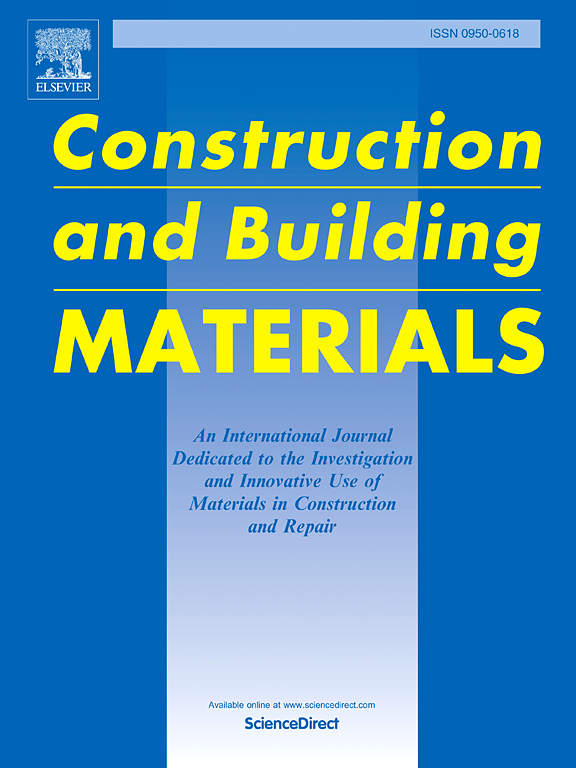Compressive fatigue resistance and damage evolution model of foamed polyurethane grouting materials under different loading characteristics and densities
IF 7.4
1区 工程技术
Q1 CONSTRUCTION & BUILDING TECHNOLOGY
引用次数: 0
Abstract
Foamed polyurethane grouting materials are susceptible to progressive fatigue damage under traffic loads after rehabilitation for highways and railways. This work systematically investigated compressive fatigue performance, focusing on density, stress level, and loading frequency. Additionally, a fatigue damage evolution model was developed. The test results revealed lower loading frequencies, stress levels, and densities led to higher fatigue life. Stress level and loading frequency had minimal impact on the initial dynamic stiffness, which increased following a power-law relationship with increasing density. In addition, the initial dynamic stiffness was approximately 1.58 times that of the quasi-static stiffness. Adjustment, stable change, and failure stages characterized stiffness damage evolution curves. Stress level and loading frequency had a limited impact on stiffness damage evolution compared to density. At failure, stiffness damage exceeded 0.3. The proposed compressive fatigue damage evolution model, incorporating density and loading characteristics, demonstrated strong agreement with test results, with mean constitutive curve errors below 6.61 %. This work provides a theoretical basis and scientific guidance for further numerical analyses and engineering applications.
求助全文
约1分钟内获得全文
求助全文
来源期刊

Construction and Building Materials
工程技术-材料科学:综合
CiteScore
13.80
自引率
21.60%
发文量
3632
审稿时长
82 days
期刊介绍:
Construction and Building Materials offers an international platform for sharing innovative and original research and development in the realm of construction and building materials, along with their practical applications in new projects and repair practices. The journal publishes a diverse array of pioneering research and application papers, detailing laboratory investigations and, to a limited extent, numerical analyses or reports on full-scale projects. Multi-part papers are discouraged.
Additionally, Construction and Building Materials features comprehensive case studies and insightful review articles that contribute to new insights in the field. Our focus is on papers related to construction materials, excluding those on structural engineering, geotechnics, and unbound highway layers. Covered materials and technologies encompass cement, concrete reinforcement, bricks and mortars, additives, corrosion technology, ceramics, timber, steel, polymers, glass fibers, recycled materials, bamboo, rammed earth, non-conventional building materials, bituminous materials, and applications in railway materials.
 求助内容:
求助内容: 应助结果提醒方式:
应助结果提醒方式:


